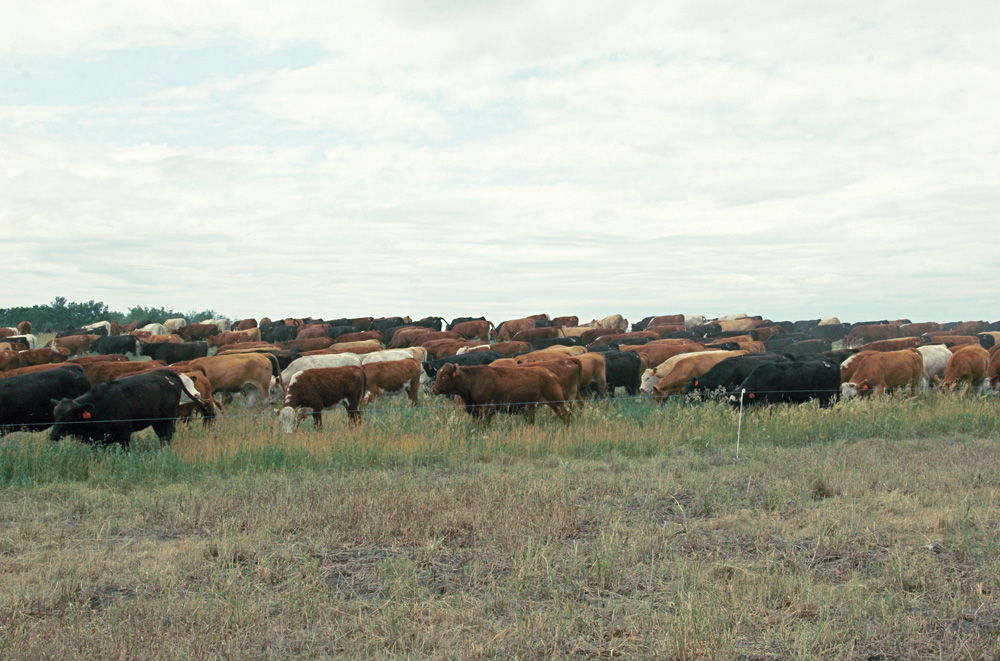With 20,000 to 25,000 hectares of Canada’s agricultural land lost annually to urban development, rural land planning that prioritizes agriculture is a necessity, says one expert.
“Protecting farmland is also about protecting the farmer, and through that process, we end up protecting food and food production capacity as well,” says Wayne Caldwell, professor of rural planning and development at the University of Guelph.
In addition to the direct loss of agricultural lands, urban expansion and sprawling subdivisions can lead to land fragmentation, restrictions to agricultural practices and changes to rural communities, having a negative impact on individual producers, stewardship of the land and Canada’s food security.
Based on his research and his career in rural land planning, Caldwell spoke about the importance of the relationship between the agriculture industry and rural land planning in protecting agricultural lands from urban development during a presentation at the 2021 Canadian Beef Industry Conference.
“Sometimes I think planning is viewed as an enemy, but in reality it should be viewed as a friend because at the core of it is this interest in protecting and helping agriculture,” he says. “Planning really is an instrument by which we ensure the future of agriculture.”
This begins with municipalities prioritizing agriculture when it comes to rural land use policy and other related structures. “It’s really important that municipalities adopt a commitment to agriculture, recognizing agriculture as an integral part of the community, and it needs to be supported through different things that municipalities might do,” he says.
“In Ontario, we are going to see significant expansion in the GTA (Greater Toronto Area). We’re going to see accommodations to handle four million more people over the next 30 years, so there will be land which is consumed by non-farm uses, but is it occurring at a high density? Is it occurring adjacent to existing urban areas? Is it occurring in a way that minimizes the impact on agriculture?”

Land use policy, he explains, needs to be developed with the needs of agriculture in mind. “It needs to have a comprehensive approach, and what I mean by that is it integrates the entire rural landscape. Forests and trees, as well as agricultural land, need to be accommodated, but it also is going to speak to things like services in the rural community, schools and all of those kinds of things which are important to the agricultural sector.”
One policy area that Caldwell states needs to prioritize farmers and ranchers is the practice of creating land severances or subdivisions, in which a separate lot is created on agricultural land to build a house. This is an area he’s studied extensively, with research projects on land severances in Ontario throughout the 1990s and 2000s.
Previously, there was a type of severance for retiring farmers, but in 2005 the province enacted a policy change that would no longer allow retirement lot severances. Currently, the only type of residential severance allowed in Ontario is “a severance for a surplus residence, which is to say as a farmer, you buy a second or third farm and those additional properties include houses which are surplus to your needs, and in turn, you make an application to sever them,” Caldwell explains.
In analyzing 20 years of data on the creation of severances in areas of Ontario’s prime farmland, he found a wide range in how different areas were affected. While the number of new lots in Perth County was 0.8 per 1,000 acres, for instance, the rate was 6.78 per thousand acres in Essex County and 7.55 in Prince Edward County.
“If you’re in Perth County, for example, the implications on you as a farmer are negligible in terms of new residential development around you, whereas if you’re in Essex County or Prince Edward County, you’ve got six, seven new neighbours around you on that 1,000 acres,” he says. “If you’re producing wheat, the issues might be pretty minimal; if you’re producing livestock, the issues could be quite significant.”
In addition to minimizing land fragmentation by developing severance policies that better consider the needs of individual producers, Caldwell notes the importance of “trying to make sure that parcels are kept to a reasonable size so that they’re actually productive for agriculture with minimal intrusions of other land uses around them.”
To illustrate how local and provincial policy can lead to positive changes in this realm, he compared the “consumptive” lot sizes of the 1970s in Ontario to modern lot sizes, estimating that about 20 of the latter could fit into the space of one of the former. “What that does, in my view, is represent a win for agriculture because the more intensely these areas develop, then the less pressure exists outside, beyond the urban community, in terms of new residential development and the loss of farmland.”
Caldwell also finds other mechanisms to be helpful in protecting farmland at this level. They include agriculture impact assessments to evaluate development proposals and local economic development strategies that include opportunities for agriculture. It’s beneficial to focus on shared values within the community, he says, and to manage conflict between residents through standards such as criteria for minimum distance separation between houses and livestock barns, for example.
“I think the policy requirements that are established obviously need to be supported by farmers, and you all have different points of view at times in that, but we try to do planning for agriculture and rural communities in a way that supports the farm sector and also develops support within it,” he says.
To help bridge the gap between urban and rural stakeholders, Caldwell advises producers and the agriculture community as a whole to become involved at this level. “It’s to understand what’s happening, it’s to be aware of the local processes and it’s to realize that what might be happening in the neighbouring town, village or city impacts you on your farm,” he says.
This also includes becoming politically involved at the municipal level, where there are fewer producers on councils than in decades past. “I think it’s also about information and being aware of how development impacts you on the farm and have a broad perspective in that.”

















